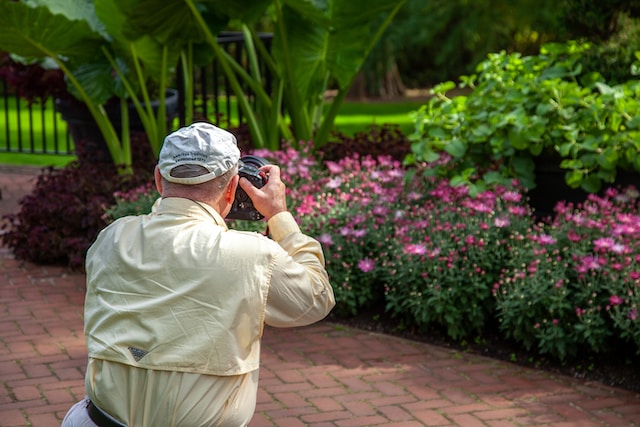
Garden photography is a captivating art form that allows us to freeze the ephemeral beauty of nature in a single frame. From vibrant blossoms to the intricate details of foliage, the lens becomes a tool to immortalize the carefully crafted designs of garden landscaping.
In this exploration, we delve into the art of garden photography, uncovering techniques, composition principles, and equipment choices that transform a green canvas into a visual masterpiece.
1. Techniques for Garden Photography
Garden photography requires a blend of technical skill and artistic vision. Understanding concepts such as depth of field, exposure, and focus is essential.
Techniques like macro photography for capturing intricate details and using a shallow depth of field to create a dreamy atmosphere are particularly effective in garden settings.
2. Composition Principles
Composition is the language of photography, and in garden landscapes, it becomes a means to tell a visual story. Applying principles like the rule of thirds, leading lines, and framing helps create well-balanced and visually engaging garden photographs.
These compositions draw the viewer’s eye to focal points, whether it’s a blooming flower, a winding path, or a serene water feature.
3. Choosing the Right Equipment
Selecting the right photography equipment is crucial for capturing the essence of garden landscapes. A versatile DSLR or mirrorless camera with manual settings allows for creative control.
A selection of lenses, including a macro lens for close-ups and a wide-angle lens for expansive shots, enhances the photographer’s ability to convey the diversity of the garden environment.
ALSO READ: Capturing the Spirit of Boxing: The Transformative Influence of Photography on Boxing Gear
4. Capturing Light in Gardens
Light is a key element in photography, and gardens offer a dynamic interplay of light and shadow. Early mornings and late afternoons provide soft, golden light that enhances colors and textures.
Experimenting with backlighting, where the light source is behind the subject, adds a touch of magic, creating a halo effect around leaves and petals.
5. Exploring Seasons in Garden Photography
Gardens undergo transformations with the changing seasons, presenting photographers with a kaleidoscope of opportunities. From the vibrant blooms of spring to the golden hues of autumn, each season offers a unique palette.
Adapting photographic techniques to highlight seasonal characteristics adds depth and diversity to garden photography portfolios.
6. Post-Processing for Enhancement
Post-processing is the final brushstroke in garden photography. Enhancing colors, adjusting contrast, and fine-tuning sharpness can elevate an image from a mere photograph to a work of art.
Software tools like Adobe Lightroom or Photoshop provide photographers with the means to refine their captures and bring out the full potential of each shot.
Conclusion
In conclusion, capturing the beauty of garden landscapes through photography is a nuanced art that combines technical expertise with a keen eye for aesthetics.
By mastering techniques, understanding composition principles, and choosing the right equipment, photographers can transform a green canvas into a gallery of enchanting images.
Garden photography is a celebration of nature’s artistry, where every frame tells a story of the meticulous design and boundless beauty found within well-tended landscapes.



